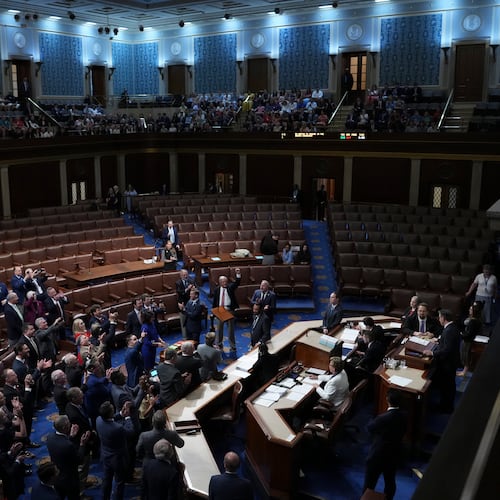The field for the race to replace Tom Price in Congress is now set with a whopping 18 candidates, and heck if I know who will win. But I can go ahead and tell you who’s going to lose the runoff.
Just bear with me for a moment.
Let’s first set the stage for this special election, spurred by Price’s confirmation as secretary of Health and Human Services, as it will be reported by those who need a Delta jet to get to his old district. Democrats are talking up their chances in Georgia’s Sixth Congressional District, and some national media outlets are indulging their fantasy. There won’t be many elections to talk about between now and the April 18 contest, and Price’s stature will only heighten the out-of-state interest in the race.
Add to this mix the somewhat rocky start to Donald Trump’s presidency — particularly in the eyes of those viewing it through their longtime D.C. lens — and there will be a temptation to proclaim the race a referendum on Trump. (To be fair, some candidates in the Sixth, seeking to galvanize Trump supporters by running under his banner, will emphasize this element, too.)
So, imagine waking up on the morning of April 19 to read that a Democratic candidate has made the inevitable runoff in this special election — perhaps ahead of the leading Republican. Should we attribute such an outcome to Trump troubles? Trump fatigue? A Trump backlash?
Nope. When it happens, as I expect it will, you’ll be able to chalk it up to one simple thing: math.
We are talking about, at worst for Republicans, a 60/40 district. Price’s 2016 race was his worst performance since first running for Congress; he still won 62 percent of the vote. Two years earlier, he won 66 percent. Two years before that, 65 percent.
The only sign of a real dropoff came in the presidential race, where Trump barely eked by with 48 percent. Four years earlier, Mitt Romney ran less than 4 points behind Price, a multiple-term incumbent. The gap between Price and Trump was almost four times larger. But that’s precisely because Price’s number tracked so closely to his usual performance, while Trump’s showing was singularly bad. Which seems to tell us more about Trump than about the district’s affinity for Republicans.
So, back to the special-election runoff. Remember, it’s a 60/40 district. That means half a dozen viable Republican candidates, plus about as many also-rans, will be fighting for roughly 60 percent of the vote.
Meanwhile, Democratic heavyweights are pushing for their party to unite behind 29-year-old former congressional aide Jon Ossoff, who claims some $250,000 in financial commitments and twice as much in funds raised through a left-wing website, DailyKos.com. Assuming Ossoff can emerge as the consensus candidate among five Democrats, he can expect a large chunk of that other 40 percent of the vote.
That would probably be enough to be the leading vote-getter in April, albeit well short of the majority needed to win the race outright. And if that happens, you will hear an explosion of commentary about an anti-Trump backlash in a GOP stronghold. For several weeks. Right up until the day of the runoff. When the survivor on the Republican side will win. Probably with ease.
And when the Democrat loses the runoff, despite all the breathless talk, remember you read it here first.
About the Author
Keep Reading
The Latest
Featured


